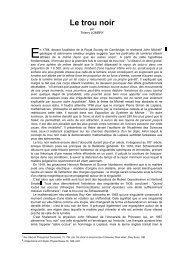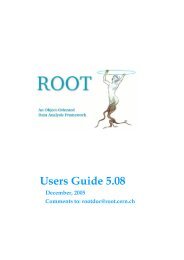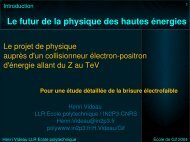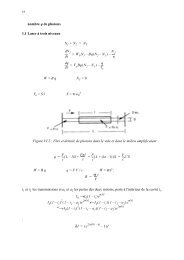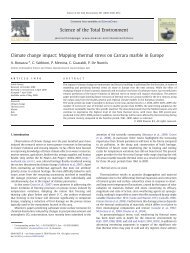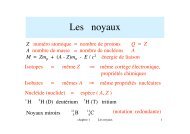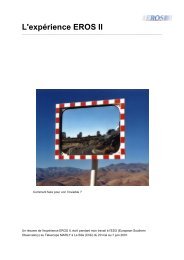XSPEC User's Guide
XSPEC User's Guide
XSPEC User's Guide
- No tags were found...
Create successful ePaper yourself
Turn your PDF publications into a flip-book with our unique Google optimized e-Paper software.
34<br />
Here, the numbers 1, 2, 3 refer to the parameter numbers in the Model par column of the<br />
screen output. For the first parameter, the column of absorbing hydrogen atoms, the 90%<br />
N H<br />
20 21<br />
2<br />
confidence range is 3.310 9.3 10 cm . This corresponds to an excursion in of<br />
2.706. The reason these “better” errors are not given automatically as part of the fit output is that<br />
they entail further fitting. When the model is simple, this does not require much CPU, but for<br />
complicated models the extra time can be considerable. The warning message is generated because<br />
there are no free normalizations in the model while the error is being calculated on the<br />
normalization itself. In this case, the warning may safely be ignored.<br />
What else can we do with the fit One thing is to derive the flux of the model. The data by<br />
themselves only give the instrument-dependent count rate. The model, on the other hand, is an<br />
estimate of the true spectrum emitted. In <strong>XSPEC</strong>, the model is defined in physical units<br />
independent of the instrument. The command flux integrates the current model over the range<br />
specified by the user:<br />
2<br />
<strong>XSPEC</strong>12> flux 2 10<br />
Model flux 3.5496E-03 photons ( 2.2492E-11 ergs)cm**-2 s**-1 ( 2.000- 10.000)<br />
Here we have chosen the standard X-ray range of 2—10 keV and find that the energy flux is<br />
11 -2 -1<br />
2.210 erg cm s Note that flux will integrate only within the energy range of the current<br />
response matrix. If the model flux outside this range is desired—in effect, an extrapolation beyond<br />
the data---then the command dummyrsp should be used. This command sets up a dummy response<br />
that covers the range required. For example, if we want to know the flux of our model in the<br />
ROSAT PSPC band of 0.2—2 keV, we enter:<br />
<strong>XSPEC</strong>12>dummy 0.2 2.<br />
Chi-Squared = 3583.779 using 31 PHA bins.<br />
Reduced chi-squared = 127.9921 for 28 degrees of freedom<br />
Null hypothesis probability = 0.<br />
<strong>XSPEC</strong>12>flux 0.2 2.<br />
Model flux 4.5306E-03 photons ( 9.1030E-12 ergs)cm**-2 s**-1 ( 0.200- 2.000)<br />
12 -2 -1<br />
The energy flux, at 9.1 10 erg cm s is lower in this band but the photon flux is higher.<br />
To get our original response matrix back we enter:<br />
<strong>XSPEC</strong>12> response<br />
Chi-Squared = 30.11890 using 31 PHA bins.<br />
Reduced chi-squared = 1.075675 for 28 degrees of freedom<br />
Null hypothesis probability = 0.358<br />
The fit, as we've remarked, is good, and the parameters are constrained. But unless the<br />
purpose of our investigation is merely to measure a photon index, it's a good idea to check whether<br />
alternative models can fit the data just as well. We also should derive upper limits to components



